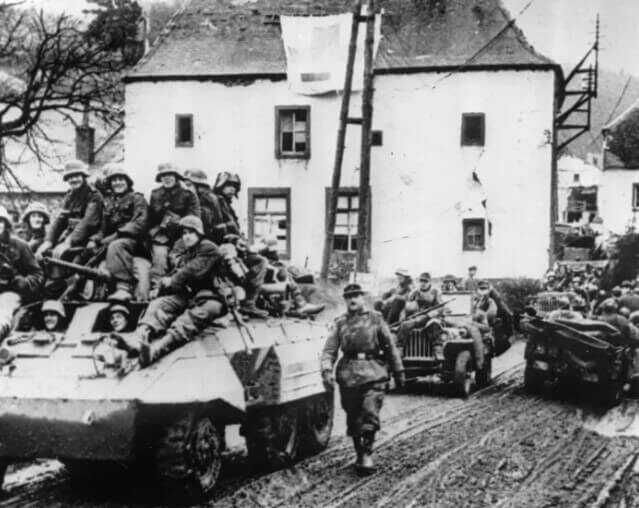
The Germans referred to their massive 1944 counteroffensive through the Ardennes as “Unternehmen Wacht am Rhein” or “Operation Watch on the Rhine.”
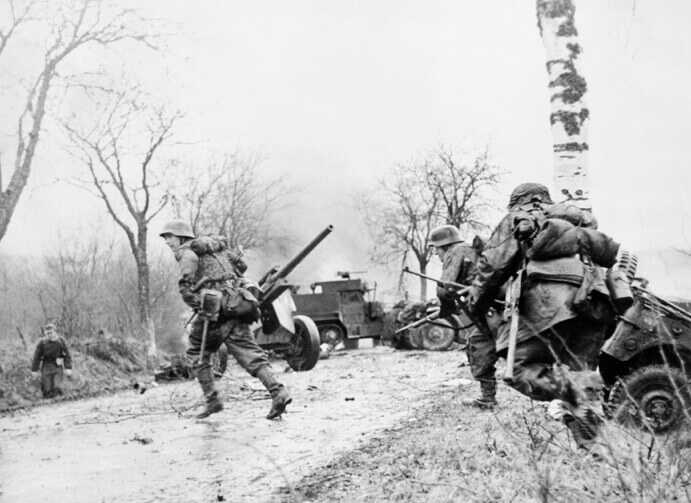
We called it the Battle of the Bulge. Regardless of the terminology, this sweeping attack represented the Germans’ final hope at staving off unmitigated disaster.
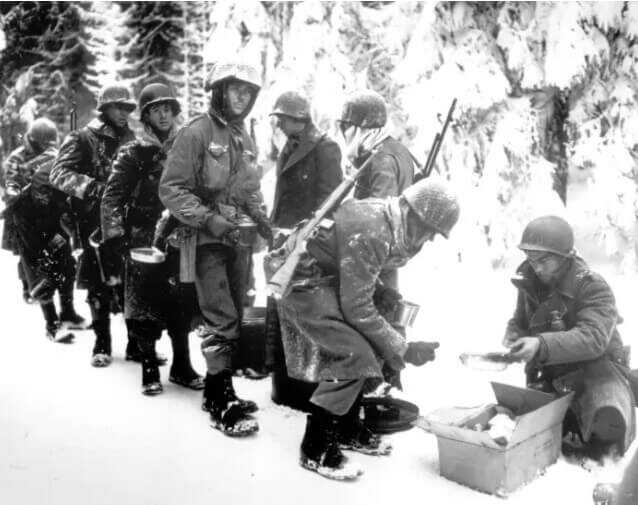
The stakes really could not have been higher. Success might mean a negotiated peace. Hitler hoped to turn the US and the UK against the Soviets for a united fight against the forces of Bolshevism. Failure would mean abject defeat and a ravaged homeland. Such pressures on young men can precipitate some fairly egregious behaviors.
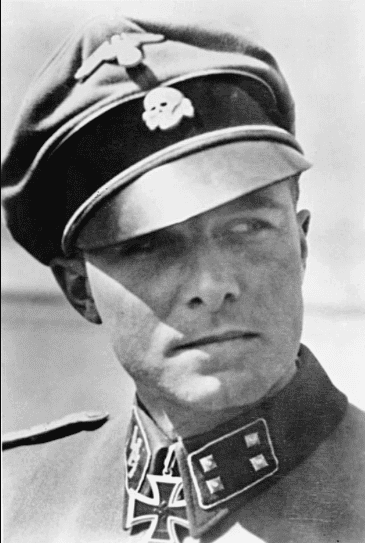
Kampfgruppe Peiper led by SS Obersturmbannfuhrer Joachim Peiper represented the vanguard of the 6th SS Panzer Army commanded by Sepp Dietrich. Racing against the clock and an ever-dwindling fuel supply, Peiper’s panzers crushed American resistance and punched deep into the Allied rear. The farther they pushed the more precarious their situation became and the more desperate they grew.
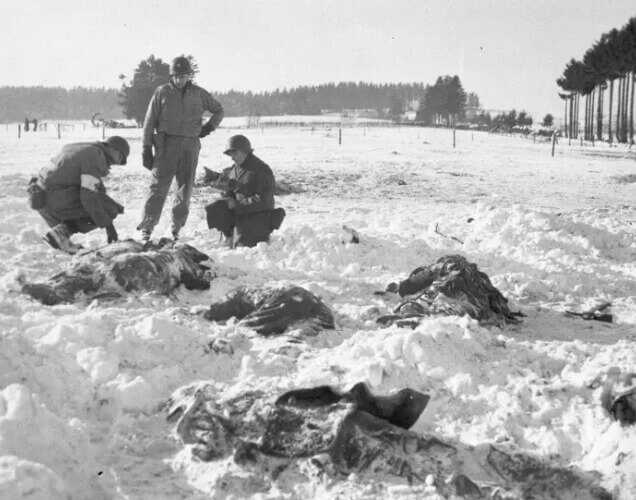
On December 17, 1944, German SS troops captured some 120 American troops from the 285th Field Artillery Observation Battalion. Desperate to continue the advance and lacking the facilities to manage prisoners, SS troops opened fire on the unarmed Americans. 84 Allied soldiers were killed.
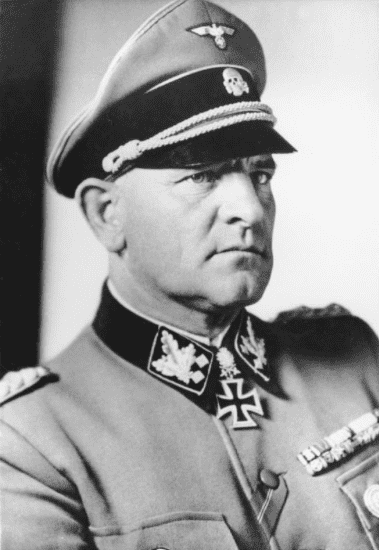
Sepp Dietrich, Joachim Peiper, and their immediate subordinates were all tried after the war for murder. There resulted 43 death sentences and another 22 defendants sentenced to life in prison. None of the executions were actually carried out. Peiper was eventually released from prison and settled in Traves in Eastern France. In the early morning of July 14, 1976, unknown assailants set Peiper’s house alight. The unrepentant Nazi died of smoke inhalation.
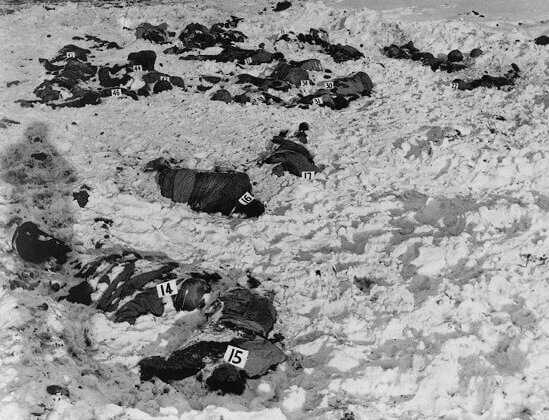
The Malmedy Massacre came to define the Battle of the Bulge. Once word of the shootings got out very few SS prisoners survived to see the inside of a prison camp. Through the shaded lens of history it is easy to look down our long Roman noses at the SS troops involved and rightly revile them. However, our own behavior in this regard was not without blemish.
The Setting
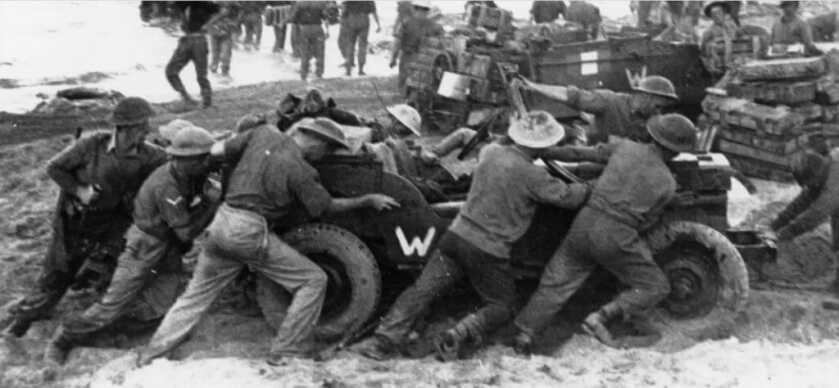
Operation Husky, the invasion of Sicily, kicked off on July 9, 1943. The command structure for this convoluted operation was complex, but LTG George Patton commanded the American ground element. In the lead-up to the invasion, Patton was in rare form.

Patton addressed his officers prior to the invasion so as to dispense last-minute command guidance and encourage his men. Many of the troops involved in Operation Husky had not seen combat before. Emotions were running high.
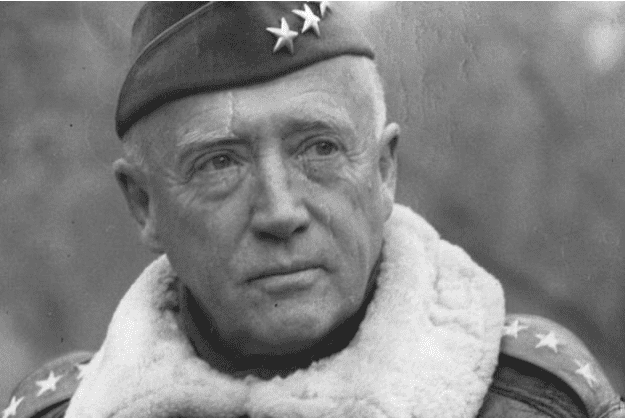
One of Patton’s regimental commanders, Colonel Forrest E. Cookson, later testified that General Patton had stated, “If the enemy continued to resist after US troops had come within 200 yards of their defensive position, surrender of those enemy soldiers need not be accepted.” Some of Patton’s troops apparently took that directive quite literally.
Event Number 1
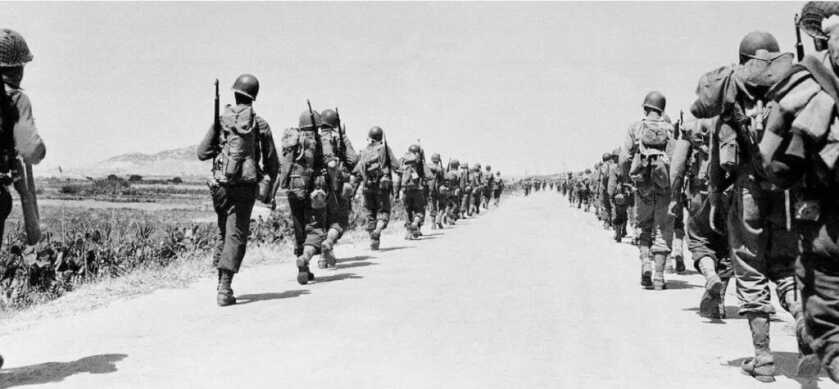
Green troops from the 180th Infantry Regiment were given the task of capturing Biscari Airfield and linking up with the US 1st Infantry Division. The 180th so struggled in the first two days of the invasion that the Division commander MG Troy Middleton considered sacking the Regimental commander. By July 14th the men of the 180th were tired, frightened, and frustrated.

SGT Horace West was tasked with securing a group of some 45 Italian and 3 German POWs. The prisoners were stripped of their shoes and shirts to discourage attempted escape. West and a few others marched the prisoners about a mile back from the lines before peeling off eight or nine for submission to the Regimental S2 (Intelligence Officer) for questioning. SGT West then borrowed a Thompson submachine gun from his company First Sergeant Haskell Brown. When the 1SG asked why he wanted the Thompson, West replied that he was going to, “Kill those sons of bitches.”
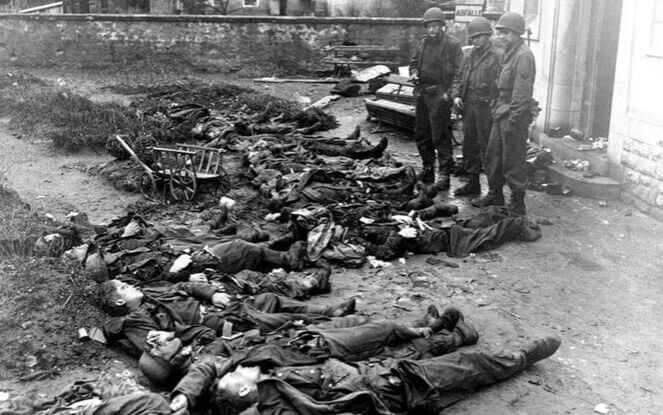
SGT West directed his men to turn away and raked the group of unarmed shirtless prisoners with automatic fire. Once he had the group knocked down he swapped out magazines, switched his Thompson to semiauto, and shot each of the fallen POWs through the chest. The following day the Regimental Chaplain discovered the 37 bodies and alerted his superiors.
Event Number 2
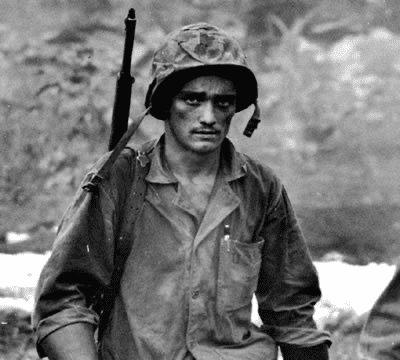
CPT John Compton, commander of C Company, 1st Battalion, 180th Infantry Regiment, was undeniably strung out. He had been without sleep for three days, and his company had taken an absolute pummeling. Persistent and relentless sniper and mortar fire exacted a horrible toll.
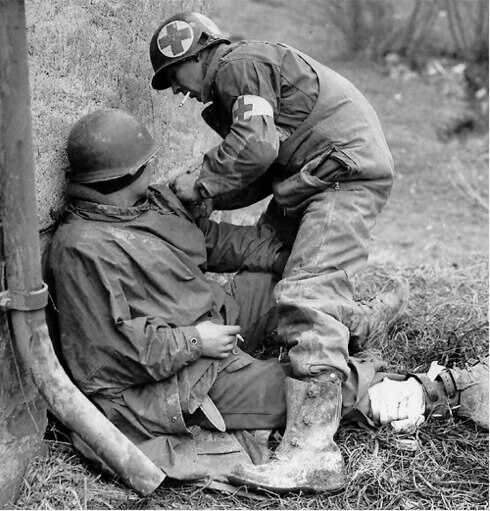
By the time Compton got to his objective at the Biscari Airfield, they had already taken heavy casualties. Of the 34 men in Compton’s 2d Platoon, fully a dozen were either dead or severely wounded. Italian snipers had fired upon wounded American troops as well as the medics dispatched to tend to them. The pressure of such grinding sniper activity weighed heavily on Compton and his men.

When Compton’s company finally seized their objective they took some 35 Italian prisoners. These Italian troops were located in a dugout fighting position from which the sniper fire had been coming previously. Several of the Italians were in civilian clothing when they were captured.
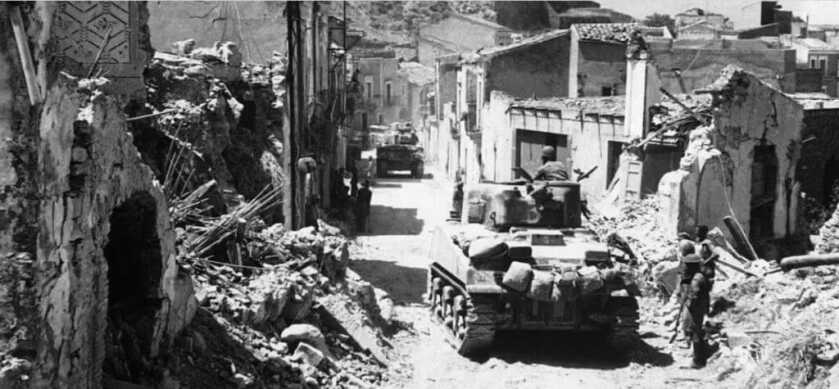
Through an interpreter, an American squad leader named SGT Hair asked the Italians if they were the ones who had been shooting at the American wounded. The Italians refused to answer. SGT Hair reported all of this to his platoon leader, 1LT Blanks, who duly passed it on to CPT Compton. Compton said simply, “Get them shot.”
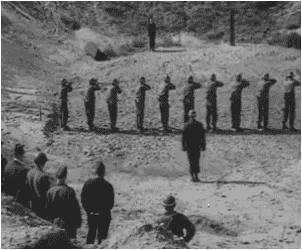
With CPT Compton in tow, his men formed an 11-man firing squad, lined up the unarmed Italian soldiers, and gunned them down. A few of the POWs attempted to run. When the dust cleared Compton’s men had killed them all.
The Guns
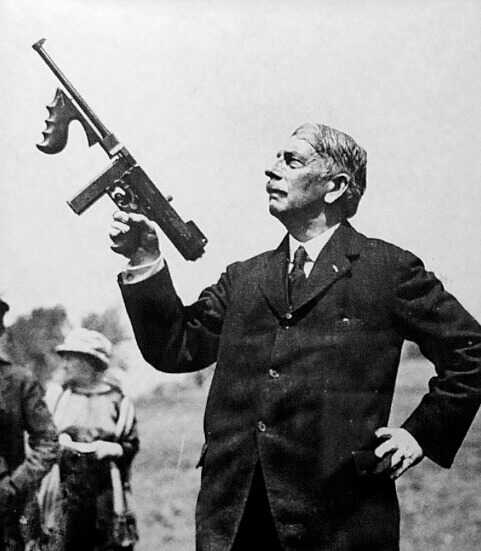
The Thompson submachine gun was designed to fight the First World War. The first operational prototypes became available within days of the 1918 armistice. With no massive government contracts to fill, General John Taliaferro Thompson marketed his handy little meat grinder to Law Enforcement and civilian users. Abuse by such sordid characters as John Dillinger and Pretty Boy Floyd bought us the onerous National Firearms Act of 1934.

Everything about the Thompson is wrong. It is too heavy, too unbalanced, and too complicated. However, when the US was dragged kicking and screaming into WW2 it was all we had available. In competent hands, the Thompson was nonetheless a reliable and effective close-combat tool.
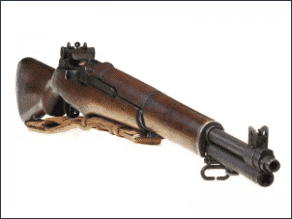
The M1 Garand was called simply the M1 by those who wielded it. At 9.5 pounds and 44 inches long the M1 was a beast of a thing. However, the .30-06 round it fired was inimitably powerful. A friend who carried one in WW2 once told me that so long as you hit a German soldier center of mass with the M1 he was down and out immediately.
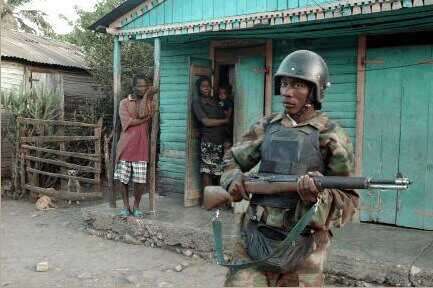
The M1 soldiered on from 1934 until 1957. I actually saw images taken from Haiti that showed security guards armed with M1 rifles in the news just last week. The M1 rifle was one of the most critical weapons in the American arsenal during WW2.
The Rest of the Story

News like this is all but impossible to suppress in a congested war zone. Eventually, word got back to General Omar Bradley who confronted Patton over it. This was Patton’s subsequent entry in his war diary that evening, “I told Bradley that it was probably an exaggeration, but in any case to tell the Officer to certify that the dead men were snipers or had attempted to escape or something, as it would make a stink in the press and also would make the civilians mad. Anyhow, they are dead, so nothing can be done about it.”
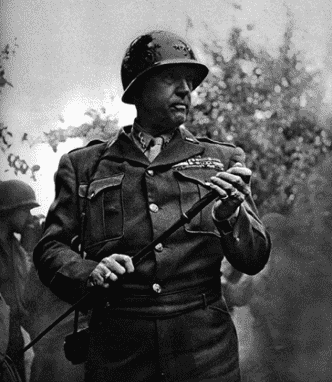
Patton was later informed that the 45th Division’s Inspector General found “No provocation on the part of the prisoners…They had been slaughtered.” Upon further introspection, Patton purportedly said, “Try the bastards.”

SGT Horace West admitted to the killings but claimed that a combination of fatigue and LTG Patton’s ambiguous orders were mitigating circumstances. He was convicted of premeditated murder by court-martial and sentenced to life in prison. Eisenhower, ever eager to avoid an unnecessary scandal, remitted his sentence on November 24, 1944. West was restored to active duty and served in combat until the end of the war. He received an honorable discharge and lived out his days in Oklahoma. He died in 1974.
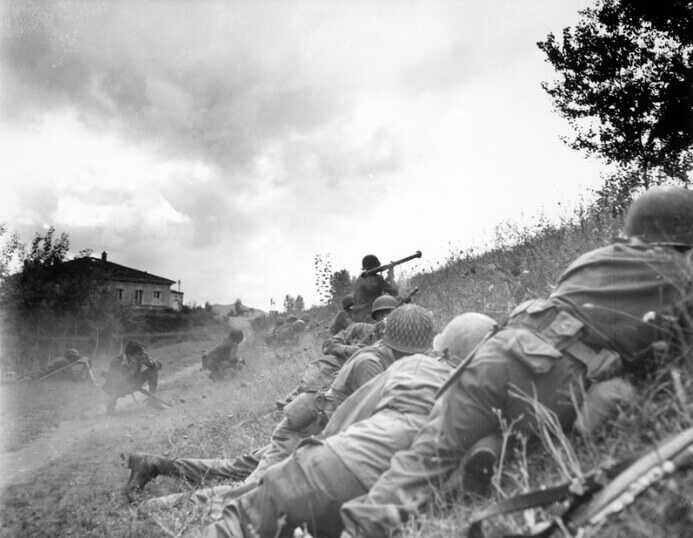
CPT John Compton was court-martialed over the deaths of the 36 prisoners under his charge and used a similar defense, particularly relying upon LTG Patton’s directives regarding prisoners resisting within 200 yards of friendly forces. He was acquitted on October 23, 1944, and transferred to the 179thInfantry Regiment. Two weeks later he was killed in action fighting in Italy.
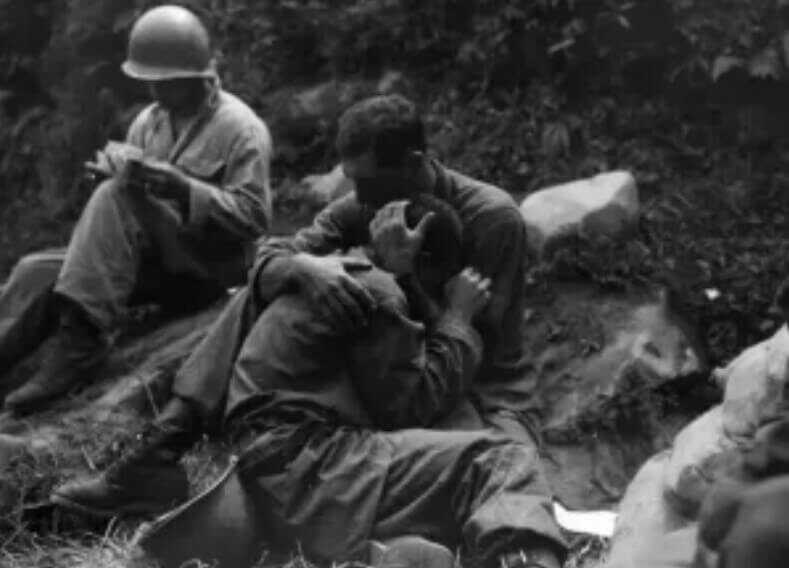
The winners write the history, and war is bad. Normal men forced into such abnormal circumstances are frequently driven to do things that seem unnatural from the comfort of our living rooms. The very act of combat is the most repugnant of human pursuits.
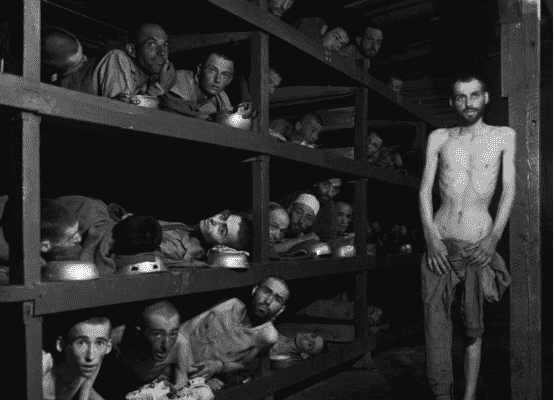
The Axis was ultimately defeated and with them went their death camps and dark aspirations for world domination. However, it took hard men doing hard things to put the final nail in the Nazi coffin. Sometimes war takes those hard men to some particularly dark places.


“Now remember, things look bad and it looks like you’re not gonna make it, then you gotta get mean. I mean plumb, mad-dog mean. ‘Cause if you lose your head and you give up then you neither live nor win. That’s just the way it is.”
Elmer (me) was Iraq and Josey Wales was in the War Between the States. I am not going to throw rocks.
I was issued a M1 Garland in 1990 as a cadet at West Point. I absolutely loved that rifle and could whip anybody’s butt In our company in competition stripping that magnificent rifle down and putting it back together.
In the words of the indomitable Nathan Bedford Forest, “War means fighting and fighting means killing!” NEVER judge any man if you haven’t walked in his shoes!
Veteran RVN 1966-68
The “Rules of War”, really started with the Civil War Union Lieber Code which would influence other nations to adopt “Rules of War”.
I understand the attempt to promote civility in all things, even War, however the United States has gone off the deep end in prosecuting men for what either aren’t crimes or are borderline. The Judge Advocate Generals office has too much power and needs to be removed from combat decision making, like the “Rules of Engagement” which is more foolishness.
The only rules should be, defend yourself and the lives of your fellow Americans. Kill the enemy when you can, whether they are armed or an active threat or not. Don’t rape and kill civilians and don’t loot. Take prisoners only if it is safe to do so, otherwise either kill them or disarm them and let them go. Collateral damage and the killing of innocents just happens, don’t like it, stay home and don’t do war. A pilot bombs a building and kills 100 civilians, whoops, a soldier throws an grenade into a building and kills an entire family – Life in Prison.
My father was a combat medic and platoon commander and served at the Bulge. He said it was common knowledge that the day after the Malmedy massacre, no prisoners were taken. The Germans stopped killing POW’s after that.
I believe those Italian snipers in civvies could have been legally shot as spies or saboteurs (and the soldiers that assisted them?). However, I don’t know if a field commander could do so on his own authority.
Thanks, Will. War, did indeed used to be hell. Only in the last century or so have we become so “enlightened” (read “woke”) that we try to prescribe rules for the wholesale slaughter of other human beings. Perhaps if war was still horrible beyond description as it once was, politicians wouldn’t clamor for it quite as often.
I knew a gentleman in Cleveland, MS who owned a service station, and was a veteran of Korea. He was tasked with marching a number of POWs to a secure location. At some point along the way, the POWs all sat down and refused to go any farther. The US soldiers lacked the manpower to physically restrain/coerce cooperation. Knowing full well that any escaping POWs would soon be back in enemy ranks, my acquaintance killed them all. He was nearly court martialed, but offered the following reasoning during the investigation. He recounted all the training he had received as a US soldier, and said that although he had been taught many, many ways of killing the enemy, there had been no training /emphasis whatsoever on SAVING the enemy. Either his testimony stood on its face, or the brass wished to avoid the political fallout. He continued in service, received an honorable discharge, and lived out his natural life as a free citizen. I’m glad he did.
I spoke to a gentleman who served in Army Intelligence during the Korean War. The North Koreans didn’t take prisoners, but we did sometimes. They would interrogate captured prisoners to get actionable intelligence on what the enemy was doing to hopefully stop them from killing more Americans.
A lot of the Chinese and North Korean soldiers didn’t want to fight and were happy to spill their guts and tell you everything. Some of the high value targets and officers were true believers. Time was of the essence on the battlefield and this man and his team would strip these resisters to the waist, dose them with water and hook-up the hand crank generators, used for field radios to them and give them some juice, most broke pretty quickly. One guy had a stroke or a heart attack and just made the “Death Sounds” and they buried the body.
You can can them criminals and murderers, maybe they were, maybe not. Their intelligence saved American lives, against an enemy that did not follow any “Rules of War”.
Another great article! I appreciate the reminder of how awful war is and what a terrible price our soldiers have paid, on so many battlefields.
Great article. But it sad how quickly America forgets its history, he’ll is not even taught in schools anymore . After Afghanistan, Iraq and many other wars, here we are in 2022 talking about the goods of socialism. After so much sacrifice by American service men and women, we are electing politicians that are enamored with socialist and communist ideologies. What a disgrace…..